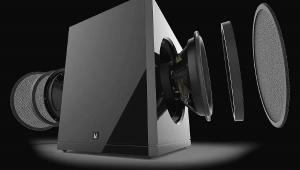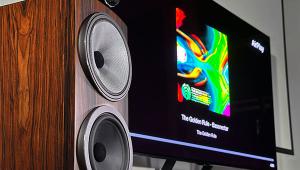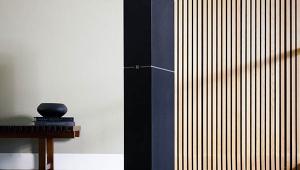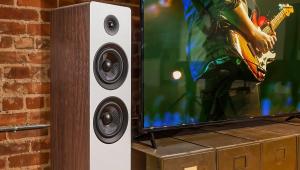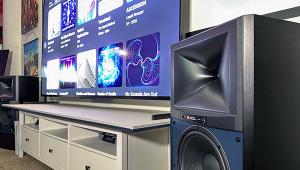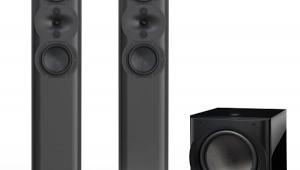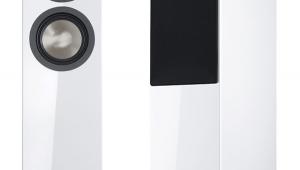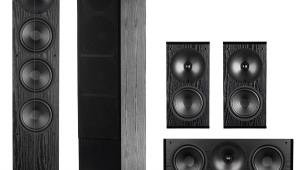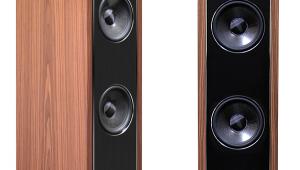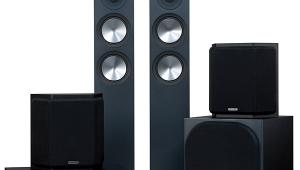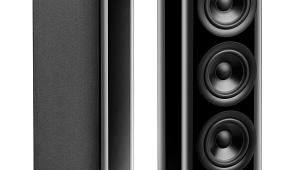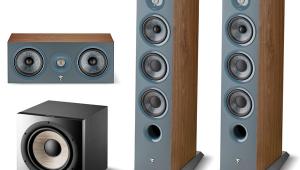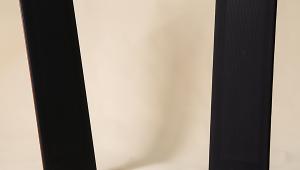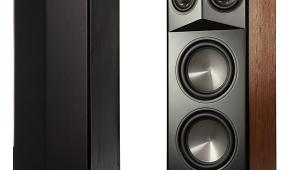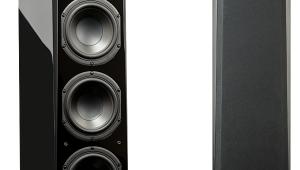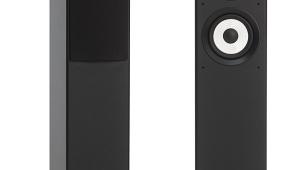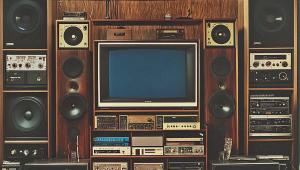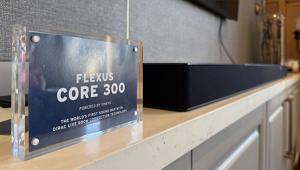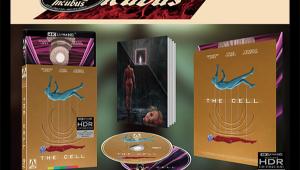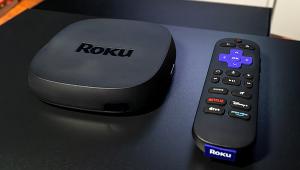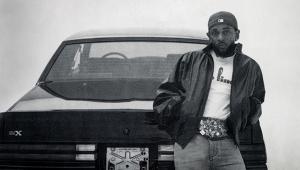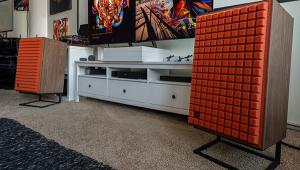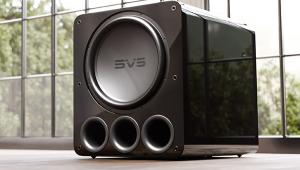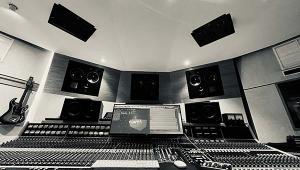RBH Signature Series surround speaker system Page 2
From the first overwhelming, expansive, room-shaking flourish of the multichannel The Film Music of Jerry Goldsmith (Telarc SACD-60433), it was clear that the RBH system's presentation was SUV-like: big, powerful, physical, and confident. How can a speaker sound "confident"? I don't know, but I know it when I hear it. A confident speaker doesn't flinch when asked to play loudly, or get defensive and lose its sonic equilibrium when required to speak softly.
Even when they were pushed really hard, I never heard the RBH's aluminum drivers compressing the sound. Nor, when asked to be subtle and softspoken, did they (as some big speakers do) seem to shrink and fold inward, losing all tonal and rhythmic clarity. Clarity and detail poured forth at volumes extreme and everywhere in between, yet there was never unnatural etch, edginess, or harshness—unless it was in the recording. Despite the 1266-SEs' impressive bass extension, the overall presentation—at any volume—was never sluggish, thick, or lumpy. This was a system that didn't confuse bass for its own sake with genuine low-frequency extension integrated seamlessly into the sonic picture. Nor did it confuse highs with air, transient speed, and transparency. In other words, the overall presentation was mostly seamless and transparent. It's rare to get this level of performance and frequency extension at this price.
Not every physically large loudspeaker produces a big sound. I've heard some imposing-looking ones that hung what sounded like little light bulbs of sound 3 or 4 feet off the ground around the midrange and tweeter array, and those little pods of sound never moved beyond the physical confines of the cabinets. In the case of the RBHs, the system's physical size was matched by an enormous, CinemaScopic audio picture seemingly unassociated with the three maple-veneered boxes standing guard aside and atop my television. With the right source material, the image produced seemed to extend from floor to ceiling and well to the sides of the L/R speakers. Having had so many speakers in the same location, I was simply amazed by the size, physicality, and dimensionality of the picture produced by the RBHs. I'm used to this kind of performance in my 2-channel room, but getting it usually requires painstaking speaker placement, with precise toe-in or toe-out, and certainly doesn't include having a refrigerator-sized TV screen in between. But I simply plopped down the RBHs where they had to go, and there it was.
The Aerial Acoustics system I reviewed in our May 2000 issue (anchored by Aerial 7Bs in the left and right channels and a CC3 in the center) produced a sonic picture of similar size, with an equally attractive but somewhat different tonal balance. The Aerial system had been more self-effacing, falling on the tonal and rhythmic side of warm and rich; the RBH was more brash, leaning toward the fast and slightly spotlit. And if, overall, the $20,000 Aerial package gets the nod for nuance and tonal lushness of the midband, consider the difference in price, and that many listeners—especially those into rock and pop—might prefer the RBH's leaner, faster sound.
I sat through the entire Goldsmith disc, savoring the RBH system's tonal sophistication, particularly the adept timbral delineation of the woodwinds and brass, as well as the enormity and cohesion of the surround-sound presentation. Like the Aerial surrounds, RBH's large dipole/bipole arrays were hardly afterthoughts. Without overwhelming the front soundfield, they filled the rear and sides of my listening room with an impressive expanse of sound without localizing their positions. Good thing, given the size and weight of the front presentation.
The DTS/DVD-Audio 5.1-channel remix of Queen's A Night at the Opera restated the RBH system's musical prowess, especially in terms of rhythmic and dynamic authority. Not the greatest recording to begin with, the remix tastefully spreads the material around without doing damage to the original mix's coherence and timbral balance. The vocals had plenty of bite, but without harshness or edginess. It was fun re-experiencing this album in 5.1—especially through a system that could do it justice. Still, rock recordings are basically collections of panpotted mono signals spread across an artificial reverb field; I'd rather hear them in 2-channel, or—dare I say it? yes, I do—in mono!
One of the music tracks that had mesmerized and surprised me through the Aerial system was Suzanne Vega's "Caramel," from Columbia/Legacy's 5.1-channel Dolby Digital DVD, The Best of Sessions at West 54th. In the Aerial review, I wrote: "I'd never heard the bass line on ‘Caramel' exhibit such physical presence, tonal purity, detail, rhythmic tautness, and extension. Nor had I heard Vega's voice sound as liquid and smooth, yet articulate. The same for her guitar, which possessed both transient string attack and resonant body. The accompanying cello, accordion, and clarinet were rich and full-bodied but never leaden. Very familiar music sounded startlingly more exciting and believable than I'd ever heard it before." The Aerial system was a revelation.
While the RBH system was not quite up to reproducing "Caramel" with the same overall authority and believability, and while this level of home-theater performance is no longer a revelation, the Signatures came very, very close to what I remember from the Aerials, especially with that bass line. The 1010-SEP subwoofer was no match for the Aerial SW12's low-end extension and flexibility (parametric bass EQ and a host of other sound-tailoring features). But overall, and in conjunction with the 1266-SEs, the 1010-SEP had the same taut, detailed, tonally pure delivery, without lumpiness or one-note bass, and for a whole lot less money.
I bought an SW12, so, unlike the rest of the Aerial system, it was still on hand for a direct comparison. No, the 1010-SEP was not the equal of the SW12, but the RBH came closer to the Aerial's performance than any other subwoofer I've had here since—especially when reproducing music. The Aerial does better with atomic bombs, large room ambiences, and the like, but considering the difference in price, the 1010-SEP is an incredible value, and one of the most accomplished subs I've heard. You'll be hard-pressed to tax its dynamic performance in a room of normal or even large size; more impressively, you'll have a harder time "hearing" it as opposed to experiencing it, which is as it should be.
While RBH Signatures resembled the Aerial system in many ways, physically and sonically, I don't mean to suggest that the RBH was the Aerial's equal overall. The center, surrounds, and powered subwoofer lacked the Aerials' incredible setup flexibility, and the Aerial sub and surrounds are remote-controlled. And the Aerial CC3 center-channel's delivery of voices is second to none, in my experience, while the RBH was merely outstanding. Still, when you consider the price difference and the RBH system's superb build and sound quality, you get to play in the same ballpark for less than a third the price. Bottom line: If you're putting together a dual-use system, the RBH Signatures will shine in music mode.
- Log in or register to post comments
